Michael Johnston's Blog, page 9
May 21, 2015
‘Don’t Try This At Home’ by Angela Readman
 With her slim volume of short stories, Angela Readman helps to make the point that while novels can be fine wines that one might enjoy, a bottle at a time, but maybe spread over more than one meal, short stories are the pure spirit distilled with care, to be sipped, one at a time and spread over a short time so as to enjoy each to its fullest extent. Don’t Try This At Home is twelve shots of 100% proof and each will leave you mildly euphoric, transported to different worlds at the edge of reality. It is truly worth the journey.
With her slim volume of short stories, Angela Readman helps to make the point that while novels can be fine wines that one might enjoy, a bottle at a time, but maybe spread over more than one meal, short stories are the pure spirit distilled with care, to be sipped, one at a time and spread over a short time so as to enjoy each to its fullest extent. Don’t Try This At Home is twelve shots of 100% proof and each will leave you mildly euphoric, transported to different worlds at the edge of reality. It is truly worth the journey.
In the title story, a girl chops her boy-friend in half with a spade, expecting to double her pleasure. That doesn’t quite work so she goes for four boy-friends/husbands each of whom, although the same, seems to develop different aspects of his personality. In a few years, she gets the spade out again!
Each story starts from a single idea, and if the reader suspends his or her belief for the first couple of paragraphs then that idea becomes a ‘given’; there are no other worlds for the duration of the story. Several of them inhabit the (sur)real world of childhood where only selected physical laws and truths are necessary . The Keeper of the Jackalopes is quickly revealed as the narrator’s father.
The best bit is the bit that used to scare her. Once the skin had been removed, the rabbit lies on the table without its bunny suit on. It can be anything it wants. Clary strokes the cool fur. The bench is covered in wire and wood wool. The pieces are all laid out. Her father stares at the clay skull with a finger on his chin, ready to put the rabbit back together again. Clary watches him, recalling when there weren’t any rabbits, only jackalopes popping up like magic. He’d cover each with a box until it was perfect. Then she’d lift the cardboard. There it was. The jackalope. Antlers, ears, rabbity whiskers almost twitching on her fingers. It looked like it was about to hop off, and got frozen with the horizon in its eyes.
Relish the situation of a childhood memory recalled. Admire Readman’s short sentences that sustain the tension. Read to the end of the story and lie down, have a cup of coffee or even go out for a brisk walk while the transitory effects of her story permeate your system before slowly wearing off. Aspects of it will, however, have entered your psyche. Then open another one; say Boys like Dolls. The boy narrator inhabits his own world.
Nathan’s GI Joe is his friend, sort of. There’s a scar on his cheek he won’t talk about. Nathan touches the smooth plastic welt. Joe spits.
‘Women love it, son. Don’t let anyone tell you a man can’t be someone with a scar. Scars are what we are.’
Nathan nods. This is exactly the sort of thing Joe always says.
In those few opening words, a whole childhood is (re)created. Unless you’ve had yours surgically removed, these opening sentences have transported you back to when you would thump anyone (smaller than you) who called your Action Man a doll.
Each one of these twelve stories is a gem: imaginative, original, polished and word perfect. No wonder the author won the Short Story Award in the Costa Book Awards in 2013 for The Keeper of the Jackalopes and was shortlisted the year before for the title story. And it gets better! This is her first collection. We have more to look forward to. Once again & Other Stories has picked a winner.
The post ‘Don’t Try This At Home’ by Angela Readman appeared first on Michael Johnston's blog/website (akanos.co.uk).
May 15, 2015
‘Le Cercle de Famille’ (The Family Circle) by André Maurois
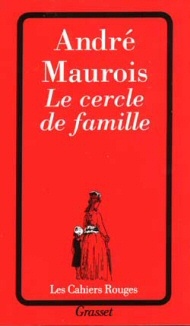 André Maurois was a prolific author; fluent in English as well as French; and I came across him because of our shared wool textile background, a background that is present in Le Cercle de Famille (The Family Circle) which I read during my recent visit to France. It is available in an English translation by Hamish Miles through Abe Books. If you are interested in French novels of the 1920s, Maurois is the man to start with and as well as The Family Circle, I suggest beginning with Bernard Quesnay and going on to Climats (Climates). If you read French your choice of editions will be wider.
André Maurois was a prolific author; fluent in English as well as French; and I came across him because of our shared wool textile background, a background that is present in Le Cercle de Famille (The Family Circle) which I read during my recent visit to France. It is available in an English translation by Hamish Miles through Abe Books. If you are interested in French novels of the 1920s, Maurois is the man to start with and as well as The Family Circle, I suggest beginning with Bernard Quesnay and going on to Climats (Climates). If you read French your choice of editions will be wider.
Maurois (1885-1967) was part of a textile family, the Herzogs, who fled Alsace during the Franco-Prussian war of 1870 and established another mill in Elbeuf (Normandy). Blin & Blin was still, in my own textile youth, a name to conjure with when talking of woollen coatings but, like almost all of such mills in this country as well as across Europe, it is long gone. How far gone is illustrated by the fact that on a visit to Elbeuf a few years back, the Tourist Information Centre had no recollection of the firm nor, alas, of André Maurois. Sic transit gloria mundi!
As well as his novels, and a World War I humorous fictional reminiscence called Les Silences du Colonel Bramble, Maurois wrote biographies of Shelley and Byron and many more.
So, back to The Family Circle. At the beginning of the 20th century, near Rouen, a woman of good family, Madame Herpain, has an affair with another distinguished citizen, Doctor Guérin. Polite society condemns this ‘bad mother’. Of her three daughters it is Denise, very close to her father, who suffers most from this betrayal. As she grows up into a very attractive young woman she resolves to lead a different and better life than her mother; to become indeed her very opposite. She wants, therefore, to love and serve a single man. Alas, her rich banker husband disappoints her and, it seems she is inexorably drawn into imitating her despised mother. Towards the end of the novel she seems to be about to become reconciled with her once despised parent who is by now married to her Doctor lover and become a part of respectable society again.
The post ‘Le Cercle de Famille’ (The Family Circle) by André Maurois appeared first on Michael Johnston's blog/website (akanos.co.uk).
May 8, 2015
‘The Red Notebook’ by Antoine Laurain
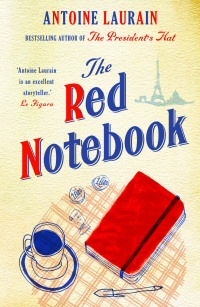 The Red Notebook (Gallic Books, 2015) was one of the two books I read on a recent visit to France which involved long train journeys; so conducive to reading for hours on end. While there, I had a chance to look at the French original, La femme au carnet rouge (Paris: Flammarion, 2014) and this confirmed my positive opinion of the translation by Emily Boyce and Jane Aitken.
The Red Notebook (Gallic Books, 2015) was one of the two books I read on a recent visit to France which involved long train journeys; so conducive to reading for hours on end. While there, I had a chance to look at the French original, La femme au carnet rouge (Paris: Flammarion, 2014) and this confirmed my positive opinion of the translation by Emily Boyce and Jane Aitken.
There are two dramatic opening chapters in which the ‘heroine’ is attacked and her fashionable handbag stolen. She has lost her keys and cannot get into her own flat so, fortunately, the compassionate night porter at the hotel opposite lets her have a room for the night on the promise to pay the next day. Then we meet the ‘hero’ who goes out for his morning stroll and compulsory coffee before opening his bookshop, called Le Cahier Rouge, the red notebook of the title. He finds the discarded handbag and takes it back to his apartment above the shop. There he commits ‘a forbidden act. A transgression. For a man should never go through a woman’s handbag.’
There follows a delightful and tortuous series of events which, you might guess but I couldn’t possibly confirm, might lead to the two of them meeting. There are few clues to Laure, the heroine’s, identity but one appeals directly to Laurent, the bookseller. It is an autographed and dedicated copy of Accident Nocturne by Patrick Modiano, Nobel Prize winner and an author who seldom does book signings and tends to shun publicity. Now, at least, he has a first name for the book-loving person who has lost her handbag. Will it be enough? You must read this very enjoyable and well-written rom-com to find out. What I can tell you is it is well worth the journey.
Since Laurent is a bookseller our author can, en passant, name a number of current highly-regarded French novelists. If you are tempted by this, have a pencil handy to note down first of all Modiano many of whose books are available in good translations, as well as Amélie Nothomb; and the outline of a very good recipe for pot au feu. If you have let the French you did at school or Uni slip, reading novels in French is a good way back in. So too would be a visit to the very useful website http://www.saliannefrenchfocus.com where the bilingual Salianne posts frequent short pieces with an English crib below. She is marvellous for contemporary French expressions. Happy reading and/or bonne lecture.
The post ‘The Red Notebook’ by Antoine Laurain appeared first on Michael Johnston's blog/website (akanos.co.uk).
April 28, 2015
‘By Night the Mountain Burns’ by Juan Tomás Ávila Laurel
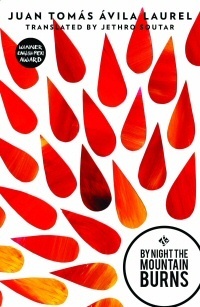 Proving that often adversity can produce great literature, Juan Tomás Ávila Laurel was born in Equatorial Guinea and his parents came from the remote Annobón Islands, miles off shore which was, then and now, not a great place to grow up. By Night the Mountain Burns, though fictional, is clearly based on the author’s own experiences. The un-named narrator is recollecting his childhood there and opening up to the reader the conventions, taboos and cultural practices of islanders who seldom saw anyone from the outside world apart from the local priest. And that priest used the Latin liturgy which was wholly unintelligible to the native population.
Proving that often adversity can produce great literature, Juan Tomás Ávila Laurel was born in Equatorial Guinea and his parents came from the remote Annobón Islands, miles off shore which was, then and now, not a great place to grow up. By Night the Mountain Burns, though fictional, is clearly based on the author’s own experiences. The un-named narrator is recollecting his childhood there and opening up to the reader the conventions, taboos and cultural practices of islanders who seldom saw anyone from the outside world apart from the local priest. And that priest used the Latin liturgy which was wholly unintelligible to the native population.
Like many great books of this genre, we are privileged to see a culture through the innocent eyes of a youngster as he grows up. The insights introduce us to the life, the superstitions and the curious (to Western eyes) customs of this tiny island in the Gulf of Guinea. The language and the perspective on that life seem to be a faithful rendition of the mind-set and thought processes of the youngster who must, it seems, have subsequently left the island.
In the well-judged and poetic translation by Jethro Soutar, English speakers can begin to appreciate how the world seems from what ought to be, but isn’t, an island paradise.
What we know about the author is that he tried to be active politically against the country’s long-standing dictatorship under President Obiang who has sold permissions to allow the dumping of all kinds of toxic wastes on Annobón. Now Ávila Laurel lives in Barcelona and as well as being a novelist is an active blogger against the regime in Equatorial Guinea.
The publishers, & Other Stories, continue to distinguish themselves for the eclectic selection of literature from other countries that English speakers do not read enough of. They have been supported in this case by English PEN as part of its on-going (indeed, never-ending) battle against the persecution and imprisonment of writers for expressing their views. You can lend your support by buying and reading this excellent novel.
The post ‘By Night the Mountain Burns’ by Juan Tomás Ávila Laurel appeared first on Michael Johnston's blog/website (akanos.co.uk).
April 13, 2015
‘H is for Hawk’ by Helen Macdonald
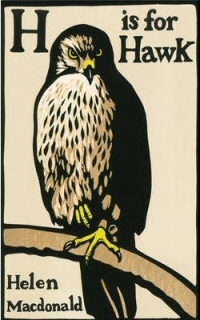 Helen Macdonald has written a memoir of that depressing period after one comes out of shock from the loss of a father, when the feeling can be so overwhelming as to drive one into depression. Her chosen therapy was to set about training a goshawk. She had the background and experience of falconry but taking this task on was to halt her academic career, oblige her to leave her university accommodation, and more or less run out of money. H is for Hawk is the beautifully written account of her many trials and tribulations and ultimate success which carried off the 2014 Samuel Johnson Prize for non-fiction.
Helen Macdonald has written a memoir of that depressing period after one comes out of shock from the loss of a father, when the feeling can be so overwhelming as to drive one into depression. Her chosen therapy was to set about training a goshawk. She had the background and experience of falconry but taking this task on was to halt her academic career, oblige her to leave her university accommodation, and more or less run out of money. H is for Hawk is the beautifully written account of her many trials and tribulations and ultimate success which carried off the 2014 Samuel Johnson Prize for non-fiction.
Running in parallel with her own story, she compares and contrasts that of T H White, author, among many books, of The Goshawk which Macdonald read as a very young girl. White too felt he was overburdened by circumstances and felt that training a goshawk would somehow prove to be the answer. However, White’s problems included ‘his homosexuality, his unhappiness, his sense of feeling unreal, his sadism, all of it; all his confusions and fears.’ Clearly there are parallels rather more than similarities and White’s story runs like a darker thread through Macdonald’s book. She makes it clear, however, that:
The book you are reading is my story. It is not a biography of Terence Hanbury White. But White is a part of my story all the same. I have to write about him because he was there. When I trained my hawk I was having a quiet conversation of sorts, with the deeds and works of a long-dead man who was suspicious, morose, determined to despair. A man whose life disturbed me. But a man, too, who loved nature, who found it surprising, bewitching and endlessly novel. ‘A magpie flies like a frying pan!’ he could write, with the joy of discovering something new in the world. And it is that joy, that childish delight in the lives of creatures other than man, that I love most in White.
In telling her story, Macdonald reveals herself every bit as joyful and more than equal to tell it in ways that remind one of that earlier famous account of living with otters. However, the sheer scope of her use of language and the compelling narrative had me comparing her with another East Anglian writer, W G Sebald – which, from me, is praise indeed.
Her own present-day story also moves in and out of powerful recollections of her father from whom she acquired her love of nature and passion for falconry. Being a professional press photographer he had that eye for detail and used his camera to describe and depict his subjects. Macdonald has his eye but she is also an immensely rich writer, depicting what she sees with such vividness that the images remain after the words have gone. She has that rare gift of using what registers first as an unusual word or phrase and then becomes the only word one could possibly use.
In the half-light through the drawn curtains she sits on her perch, relaxed, hooded, and extraordinary. Formidable talons, wicked, curved black beak, sleek, café-au-lait front streaked thickly with cocoa-coloured teardrops, looking for all the world like some cappuccino samurai. ‘Hello hawk,’ I whisper, and at the sound she draws her feathers tight in alarm. ‘Hush,’ I tell myself, and the hawk. Hush. Then I put on my falconer’s glove, step forward and take her on my fist, untying the falconer’s knot that secures her leash to the perch.
As ever, this blog does not like to say too much about the ‘plot’, even of non-fiction, so, apart from further illustration of the quality of Macdonald’s writing, I shall not further anticipate the story. Macdonald tends to keep the reader on edge with short, sometimes even one word, sentences; a gift I envy! She finds unexpected words to create her similes: ‘as the light deepens and the late swifts ascend to bury themselves in the sky’; not where things are usually buried but all the more poetic and vivid for that reason. And talking of reasons; while I simply could not conceive of taking up falconry or hunting with a hawk, the fact is that Macdonald has held me gripped with her description and the twists, turns, disappointments and joys of her experience. She richly deserved her Samuel Johnson prize.
H is for Hawk, Helen Macdonald; London: Vintage Books, 2014
The post ‘H is for Hawk’ by Helen Macdonald appeared first on Michael Johnston's blog/website (akanos.co.uk).
April 1, 2015
‘The Miniaturist’ by Jessie Burton is by any standard a big book
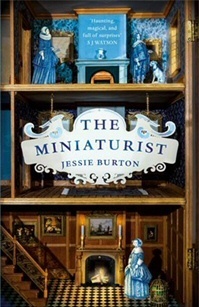 One might say that The Miniaturist starts small but it grows in power and passion with every passing page. Debut novelist (how I envy her!) Jessie Burton, only in her thirties, may have to spend much of the rest of her writing life trying to do better than this first novel. She was triggered off by seeing the “real” miniature house, much more than a mere doll’s house, on a visit to Amsterdam and the Rijksmuseum which houses such a miniature which was built for the “real” Petronella Oortman in 1686.
One might say that The Miniaturist starts small but it grows in power and passion with every passing page. Debut novelist (how I envy her!) Jessie Burton, only in her thirties, may have to spend much of the rest of her writing life trying to do better than this first novel. She was triggered off by seeing the “real” miniature house, much more than a mere doll’s house, on a visit to Amsterdam and the Rijksmuseum which houses such a miniature which was built for the “real” Petronella Oortman in 1686.
The eighteen-year-old, fictional Petronella (Nella) comes from Assendelft to Amsterdam with her pet parakeet, to begin her arranged marriage to Johannes Brandt, twenty years her senior; in no sense an unusual situation for the time and place. She is prepared to carry out her roles as wife, mother and household manager, only to find that her husband seems in no haste to consummate the marriage and her sister-in-law, Marin, appears to control every aspect of the house and is reluctant to cede her authority. The servants are Cornelia, cook and maid of all work, and Otto, a Negro from Dahomey who is not made to feel very welcome by bigoted Amsterdammers and Calvinist preachers. Brandt has been asked by an old friend to sell his sugar loaves that are his wife’s entire inheritance from her late father’s plantation in Surinam, but seems in no undue haste to do that either.
Johannes makes her a wedding present of a large miniature reproduction of the Brandt house and home on the Herengracht (the Gentlemen’s canal) and Marin hands her the 17th century equivalent of the Yellow Pages, Smit’s List, a register of all craftspeople and businesses in the Dutch Republic’s capital, and in which she finds an entry under M:
MINIATURIST Residing at the sign of the sun, on Kalverstraat. Originally from Bergen. Trained with the great Bruges Clockmaker, Lucas Windelbreke. ALL, AND YET NOTHING
Nella writes to the miniaturist, asking for some few items for her mini-house, such as a lute, with strings, a betrothal cup, filled with confetti, and a box of marzipan. These are delivered very soon with several other items that while appropriate were not asked for. An air of mystery now surrounds the source of these exquisitely made miniatures and their unseen maker, who seems at all times through the book to know more about everything and everyone than can be explained. The scene is now set for the plot to work its way to a gripping conclusion.
Why, you might ask, does Johannes not consummate his marriage? Who is the mysterious English youth, Jack, who delivers packages from the miniaturist and seems very close to Johannes? What is the secret that Marin is concealing? Will the sugar be sold before black spores begin to grow on it in the damp warehouse? All this and more than you ever knew about life in Amsterdam at the end of the 17th century, the Dutch East India Company, (known to the Dutch as the VOC), Calvinist religiosity and general hypocrisy.
 Given this blog’s strict no spoiler rule, nothing more can be said about the story other than to say that Jessie Burton manages to make each chapter, sometime each successive page, more gripping than the one before and that the beautifully written and dramatic dénouement should leave you hoping she will soon publish her next book. I would compare her skill to that of established author David Mitchell who wrote about the same period in his novel The Thousand Autumns of Jacob de Zoet. This is a must read if ever there was.
Given this blog’s strict no spoiler rule, nothing more can be said about the story other than to say that Jessie Burton manages to make each chapter, sometime each successive page, more gripping than the one before and that the beautifully written and dramatic dénouement should leave you hoping she will soon publish her next book. I would compare her skill to that of established author David Mitchell who wrote about the same period in his novel The Thousand Autumns of Jacob de Zoet. This is a must read if ever there was.
Burton, Jessie, The Miniaturist; London, Picador, 2014
The post ‘The Miniaturist’ by Jessie Burton is by any standard a big book appeared first on Michael Johnston's blog/website (akanos.co.uk).
March 26, 2015
‘Esperanza Street’ by Niyati Keni
 There’s hope for us all in Esperanza Street, a newly-published debut novel full of hope for the future by Niyati Keni which she sets in a port town in the Philippines at the beginning of the Eighties. It tells the story of Joseph from the age of eight to fifteen. His siblings have already left home when his mother dies. Feeling unable to properly care for his son and hold down his work as a stevedore, his father places him as a houseboy with ‘Aunt’ Mary Morelos, another lady down on her luck who runs a boarding house.
There’s hope for us all in Esperanza Street, a newly-published debut novel full of hope for the future by Niyati Keni which she sets in a port town in the Philippines at the beginning of the Eighties. It tells the story of Joseph from the age of eight to fifteen. His siblings have already left home when his mother dies. Feeling unable to properly care for his son and hold down his work as a stevedore, his father places him as a houseboy with ‘Aunt’ Mary Morelos, another lady down on her luck who runs a boarding house.
Through the acutely observant eyes of the young narrator, we see a vivid and well-described picture of the street life of a rundown district in Puerto Nuevo. The novel has the air of a photograph album of Joseph’s life as he grows up there with short cameo-like chapters on a series of interrelated topics and stories. The quality of the language suggests that Joseph is recollecting his childhood with affection and rare turn of language, as for example in this description of the street in the early morning.
I knew the rhythm of the street by heart. Johnny Five Course would be wedging an umbrella into the boughs of the frangipani tree and leaning back against the trunk, his feet up on the wheels of his food cart. On the corner opposite, Abnor, short for Amos Balignasay Junior, sixty if he was a day, would be flipping up the wooden wings of his tea cart and sliding his stool underneath before stepping into the doorway of Primo’s store to share a cigarette with the man himself, perhaps making his long considered move on the chess board atop Primo’s counter. Half a block along, in the direction of the sea, Cora would be hooking the sunshade down over the chairs in front of the Coffee Shak. At the bottom of the hill, Colon Market would be blossoming into a patchwork of awnings and umbrellas. And down at the jetty, my father and Jonah and the rest of the boys would sit it out under any shelter to be had or, if there was none, would squat on the sea wall, their shirts pulled over their heads and, laughing at each other, turn their faces up to the sky.
Esperanza, one of the oldest streets in Puerto, its heart-beat made up of thousands of small pulses, lulled us all with its apparent constancy. Yet even then, unknown to us, in a bright, air-conditioned office as close to our street as it was distant, a new and remorseless beat was gathering.
The threat to the future of all the varied people who make up the fabric of the street is in the plans for development of the whole area in the official name of progress and the obvious subtitle of profit. Woven through the short chapters with titles like ‘Spanish Colonial Architecture’, ‘Rice and Chocolate’, ‘Stevedores’ ‘Street Barbers’ and many more are the plans of the corrupt developer and the no less corrupt members of the moneyed élite, the older families not lacking in money but often bereft of compassion. ‘Of course, there’ll be losers,’ Judge Robello said, a little impatiently, I thought.
The book is richly populated with fascinating characters and dramatic incidents through which Joseph is both observer and participant. The reader feels that although Esperanza Street, as Joseph knows it is doomed, yet he will go on, perhaps to college in Manila and further afield.
With a name like Niyati Keni and a location in the Philippines, my first thought on looking at this book was that it was another in their excellent series of novels in translation from around the world but this time the publisher, & Other Stories, has sprung a surprise. Keni is in fact a Londoner of Indian parentage who became a qualified doctor and travelled extensively in Asia, including the Philippines, and now lives in West Sussex where she is working on her second novel. I will be looking out for that.
The post ‘Esperanza Street’ by Niyati Keni appeared first on Michael Johnston's blog/website (akanos.co.uk).
March 5, 2015
‘Signs Preceding the End of the World’ by Yuri Herrera
 ‘Yuri Herrera’s Signs Preceding the End of the World is a masterpiece, a haunting and moving allegory about the violence and the culture built to support and celebrate that violence. Of the writers of my generation, the one I most admire is Yuri Herrera,’ writes Daniel Alarcón on the back cover of this fascinating novella that sheds a very human but unflattering light on the illegal cross-border traffic of human beings between Mexico and the United States and, very rarely, in the other direction.
‘Yuri Herrera’s Signs Preceding the End of the World is a masterpiece, a haunting and moving allegory about the violence and the culture built to support and celebrate that violence. Of the writers of my generation, the one I most admire is Yuri Herrera,’ writes Daniel Alarcón on the back cover of this fascinating novella that sheds a very human but unflattering light on the illegal cross-border traffic of human beings between Mexico and the United States and, very rarely, in the other direction.
The story’s tough young heroine is Makina who is asked by her mother to go to the States and find her brother who made it there successfully but seemed not to strike it rich and has stopped writing home. To get across that frontier, she needs the help of the Mexican mafia and needs to do them a favour in return; ferrying a package to the States. The author has created Makina both street-smart and observant and we can see how she is capable of defending herself. We hear too, in her inner voice, the by-play of the two languages, what she calls ‘latin’ and ‘anglo’, and how they can fuse into a third with varying proportions according to circumstances.
They are homegrown and they are anglo and both things with rabid intensity; with restrained fervor they can be the meekest and at the same time the most querulous of citizens, albeit grumbling under their breath. Their gestures and tastes reveal both ancient memory and the wonderment of a new people. And then they speak. They speak an intermediate tongue that Makina instantly warms to because it is like her; a hinge pivoting between two like but distant souls, and then two more, and then two more, never exactly the same ones; something that serves as a link.
More than the midpoint between homegrown and anglo their tongue is a nebulous territory between what is dying out and what is not yet born. But not a hecatomb. Makina senses in their tongue not a sudden absence but a shrewd metamorphosis, a self-defensive shift. They might be talking in perfect latin tongue and without warning begin to talk in perfect anglo tongue and keep it up like that, alternating between a thing that believes itself to be perfect and a thing that believes itself to be perfect, morphing back and forth between two beasts until out of carelessness or clear intent they suddenly stop switching tongues and start speaking that other one. In it brims nostalgia for the land they left or never knew when they use the words with which they name objects; while actions are alluded to with an anglo verb conjugated latin-style, pinning on a sonorous tale from back there.
Makina has to cross a river, escape from possible capture and make contact with the local Mexican Mafioso in order to start her search for her brother. That success is ultimately successful but not as she had been expecting. He has become an American by assuming another man’s identity. He is not planning to come back and, at the end, Makina is faced with making the choice herself of integration or making her way back (illegally again) to Mexico. Read this masterful book to learn what her choice is and why.
The translator had a difficult task since the original Spanish of Señales que precederán al fin del mundo is not only the voice of a modern young Mexican but full of neologisms that cannot be literally translated without sticking out of the text awkwardly. Talented, polyglot translator Lisa Dellman has risen to the challenge by creating a language that is not jarringly americanised and still conveys the thought processes of a latin-tongued protagonist in an exciting English translation. This is another example of the sterling work of the publisher & Other Stories who will publish another of Herrera’s novels next year. Native English speakers read too few ‘foreign’ novelists even in translation so here is a chance for us to begin to put that right.
The post ‘Signs Preceding the End of the World’ by Yuri Herrera appeared first on Michael Johnston's blog/website (akanos.co.uk).
February 25, 2015
‘Three Strong Women’ by Marie N’Diaye
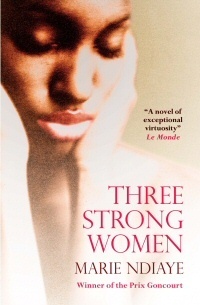 Like the three strong women in her book, Marie N’Diaye is strong: strong-minded enough to leave France after criticising Sarkozy to live in Berlin. Her writing career is strewn with prizes, being the first writer to win both the Prix Femina and the Prix Goncourt. She won the Goncourt for this book, Three Strong Women and it also took the Berlin World Literature Prize. She is a playwright too with her play Papa doit manger (Daddy’s got to eat) being taken into the repertoire of the Comédie Française. It is a funny absurdist piece with echoes of Ionesco. This volume is translated by the prize winning John Fletcher. The three stories concern three Senegalese women and, apart from vague references that seem to link the stories, the link that matters is the trials and torments that, in their different ways, they are exposed too.
Like the three strong women in her book, Marie N’Diaye is strong: strong-minded enough to leave France after criticising Sarkozy to live in Berlin. Her writing career is strewn with prizes, being the first writer to win both the Prix Femina and the Prix Goncourt. She won the Goncourt for this book, Three Strong Women and it also took the Berlin World Literature Prize. She is a playwright too with her play Papa doit manger (Daddy’s got to eat) being taken into the repertoire of the Comédie Française. It is a funny absurdist piece with echoes of Ionesco. This volume is translated by the prize winning John Fletcher. The three stories concern three Senegalese women and, apart from vague references that seem to link the stories, the link that matters is the trials and torments that, in their different ways, they are exposed too.
Norah has left Dakar for a successful career as a lawyer in France. A single mother who has just embarked on a new relationship with a man and his own daughter, she answers a summons from her father to return. Her once powerful, in every sense, father is now a shrunken shell of his former self. It transpires that her task will be to try and get her brother out of jail where he is awaiting trial for a murder he has confessed to. But the story is even more complex: he is alleged to have murdered his step-mother. It emerges that the son has had a passionate affair with her, that her children are probably his and that we begin to wonder if the son is confessing to protect his father. There are elements of magical realism to add to the mix and the still powerful pull the father seems to exert on his daughter.
Fanta’s story is revealed through the tormented mind of her white French husband. Fanta has followed him to France when he lost his teaching job in Senegal but the move has made her unqualified to teach in France. Rudy’s feelings of inadequacy, the crippling effects of his domineering mother and the knowledge that he has let Fanta down gradually overwhelm him and the symbolic figure of a black buzzard that menaces him drives him to what looks like the point of collapse and yet, unexpectedly, the story ends on a hopeful note.
 For Khady, however, nothing goes right and she is driven further and further down by circumstances. At the start, she is a childless widow, expelled by her late husband’s family. As one of the endless flow, or do I mean flood, of refugees seeking an illusory paradise in Europe, she is befriended, betrayed, exploited and abandoned. She seems, towards the end, to be approaching a Spanish enclave in North Africa, surrounded by a fence that is both real and symbolic. The story will end there.
For Khady, however, nothing goes right and she is driven further and further down by circumstances. At the start, she is a childless widow, expelled by her late husband’s family. As one of the endless flow, or do I mean flood, of refugees seeking an illusory paradise in Europe, she is befriended, betrayed, exploited and abandoned. She seems, towards the end, to be approaching a Spanish enclave in North Africa, surrounded by a fence that is both real and symbolic. The story will end there.
These are moving, beautifully crafted and written stories that are, especially the last, of increasing topicality: an illustration of how fiction can more powerfully tell the facts than any official, factual account. Good reading for Lent! Deny yourself cheerfulness: you know it’s good for you!
The post ‘Three Strong Women’ by Marie N’Diaye appeared first on Michael Johnston's blog/website (akanos.co.uk).
January 21, 2015
‘The Alphabet of Birds’ by S J Naudé casts a spell
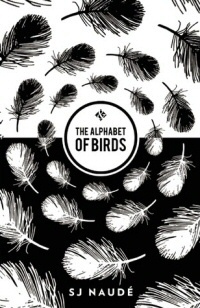 The seven short stories in this new collection by S J Naudé take the reader on a series of melancholy journeys. Somehow, none of the characters seem able to escape deception, disappointment or the pangs of unfulfilled desire. Curious then that such a set of stories can deliver such a degree of satisfaction, teetering on the edge of pleasure.
The seven short stories in this new collection by S J Naudé take the reader on a series of melancholy journeys. Somehow, none of the characters seem able to escape deception, disappointment or the pangs of unfulfilled desire. Curious then that such a set of stories can deliver such a degree of satisfaction, teetering on the edge of pleasure.
Naudé is an Afrikaner and his book was originally written in Afrikaans but the author has made his own excellent translation into English. At one point in the story ‘Mother’s Quartet’ when a woman reads to a child in Afrikaans, the words are not translated and it comes as a pleasant shock to recognise the poem.
Engeltjie, engeltjie, vlieg dadelik voort!
Jou vader is dood, jou moeder is dood
En jou kindertjies eet droëbrood.
(Do you remember, Ladybird, ladybird, fly away home?)
For many years Naudé practised as a lawyer in London and New York but then took himself back to South Africa and worked for a Master’s degree in creative writing. This book is the outcome of that hard work and the Afrikaans edition has won several prizes while the author has been awarded a prestigious writing scholarship.
The stories shed light on what it is to be an émigré South African returning to a post-apartheid country and finding it hard to fit in; and what it can mean to be a white South African trying to ‘do good’ in a climate of political corruption that seems to be tolerated by the new masters.
Expressions of love are thwarted and overall the protagonists find themselves defeated by the stronger will of others or by a combination of circumstances. This is not so much an alphabet of birds as a dictionary of melancholy. Hard to describe then why it seems to be so satisfying. The quality of the writing, creative and distinct, must be part of the reason. And the fact that life is often nasty, brutish and yet seems to go on forever may be another. Naudé’s work is compelling and I hope to see more of it.
The post ‘The Alphabet of Birds’ by S J Naudé casts a spell appeared first on Michael Johnston's blog/website (akanos.co.uk).
Michael Johnston's Blog
- Michael Johnston's profile
- 4 followers



